|
After his return from his first trip to Europe in 1948, Juan Manuel Fangio decided to take part in the "Grand Prix.", from Buenos Aires in Argentina to Caracas in Venezuela. Originally, the idea was to reach New York in USA, but this could not be accomplished.
With 9600 kms and 14 stages from start to finish, the return would be done from Lima in Peru, with 5 stages and a total of 5200 km. By doing this, the drivers that had been forced to quit would have an easier trip.
From the start, the race was known as "La Carrera a Caracas" and then simply "Buenos Aires-Caracas".
|
The starting grid used an innovative method, placing the drivers in two groups; the first ones being the ones who had won great races of the Automóvil Club Argentino: 1) Fangio-Urrutia (Chevrolet), 2) Supicci Sedes-Calache (Ford), 3) Gálvez-Herrero (Ford), etc. Of course, the numbers of the cars matched the place in the starting grid.
|
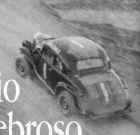
|
The stops/steps were as follow
|
1. Buenos aires-Salta (1692,6 km)
|
8. Guayaquil-Quito (425,4 km)
|
|
2. Salta-La Quiaca (380 km)
|
9. Quito-Pasto (391,9 km)
|
|
3. Villazón-Potosí (459,8 km)
|
10. Pasto-Cali (440,4 km)
|
|
4. Potosí-La Paz (543,4 km)
|
11. Cali-Bogotá (527,5 km)
|
|
5. La Paz-Arequipa (546,2 km)
|
12. Bogota-Cúcuta (598,7 km)
|
|
6. Arequipa-Lima (1092,2 km)
|
13. Cúcuta-Valera (484,1 km)
|
|
7. Lima-Tumbes (1321,6 km)
|
14. Valera-Caracas (675,6 km)
|
The return, from Peru, was the following
|
1. Lima-Tacna (1409,3 km)
|
4. La Serena-Santiago (666,6 km)
|
|
2. Arica-Antofagasta (739,5 km)
|
5. Mendoza-Buenos Aires (1081,7 km)
|
|
3. Antofagasta-La Serena (936,3 km)
|
|
The race was for cars of any power and displacement, with metal enclosed body. The chassis and engine, regardless of the year, should match with the mark. No special cars, sport and grand sport were admitted. As a consequence, cars chosen were from "Turismo de Carretera" (coupes 1939 to 1946).
It may be said that this type of race was the forerunner of the current Rallies. The cars should be strong enough to run over any ground, night and day, mountains, deserts, rain and any kind of hurdle, but in most cases they could not stand the pace. Also, these races opened ways of communication among the countries of South America, that today enable a swift contact between them.
|
During the race, Fangio had one of the most important accidents he suffered during his career. Unexpectedly, on October 27th, all the cars had to leave Arequipa as the revolution that was happening in Peru was approaching the city.
|
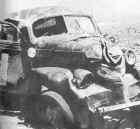
|
|
Tired and without sleep, the drivers left for Tumbes. Fangio had to stop in Trujillo to refuel, but 20 kilometers further his car crashed at the exit of the little town of Huanchasco. His co pilot, Daniel Urrutia, lost his life. The car, though severely damaged, was repaired in Lima. Never the less, Fangio retired as he was too sad to continue after his co-drivers death.
|
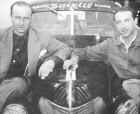
|
The model
Generally speaking, the kit is well made. Shapes are right but it had a number of mistakes that were corrected before it was started. Provence Moulage, received a list of these errors from the Argentinian sports journalist, Mr. Jorge Ferreccio. Production of the model was too far advanced to include the corrections.
Not every mistake could be corrected, more time would have been needed to prepare the right decals. The following is the list of the changes for those who want to build a historically correct model that represents Fangio's car.
Starting by the inside of the car, there is a wall that separates it from the trunk that must be deleted. On the back, there were 3 tanks, one for fuel (220 liters) and two smaller, one of water and the other one of oil. The spare wheel must be placed in the trunk, instead of behind the seats. Interior and seats must be sky grey, panel in matt black and the steering wheel in cream.
|
Looking at the body, the lines for the fenders are fine; but the trunk lid should have a uneven texture and had two reinforcements. Originally, this part was only frame covered with fabric to save weight.
In this race, Fangio and his co-driver Urrutia ran with the number "1" painted in 5 positions (hood, doors, roof and trunk lid) and not with the "2" in three positions as stated in the kit. The number in the lid on the back is white over a black rectangle painted to conceal the number of the previous race; the one of the bonnet is placed under the Chrome trim. The shield on the doors is too small, it's size must be increased at least 50 %.
The word "Suixtil" on the roof is too big and must be reduced 30 %. The words "Trajes" and "Bs. Aires" must be placed before and after it in little block letters. Above it the word Balcarce, also in the same letters. The ones above the doors should follows the shape of the roof towards the back. In the center of the roof there goes the number "1".
The identification plate is wrong as it should be 291-498 with the words "Provincia de Buenos Aires" instead of 291-492 with the word "Balcarce". On the front of the car, it does not go in an angle but paralel to the right cooling entrance and above and outside it. The one on the back was not over the fenders but below it, in the wheel arch.
The kit has a decal to represent the protection of the lights. The original car had the two forward side cooling vents and the radiator grill as well protected.
Other things missing are: the handle to open the trunk, spotlights which you could operate from inside, this model had two (one on each side of the windshield) and small circular decals of "Asociación Argentina de Volantes" that must be placed on the rear of the roof. The exhaust pipe is a completely different, the one supplied with the kit starts on the right side of the chasis and goes under the car, while the Chevrolet cars with the 6 cilinders engines had the tube on the left side. In this model of TC, the tube starts under the front left fender, goes under the door and goes up to the back fender, reaching the upper half of it. The back bumper is to curved and should be made almost straight.
The last detail of importance is the position of the windshield wipers. The one for the co-driver is in the original position, but the one of the driver is on the top of the screen.
|
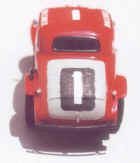
|
|
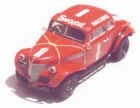
|
|

|
|

|
|
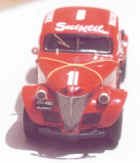
|
|

|
All these mistakes would have been saved with a thorough research or without ignoring the advice sent by the people who know the subject. These mistakes happen when a car that is in a museum is copied. Regretfully, these mistakes, though not a lot in number, are common place, as in the case of the limited series of Porsche done by Minichamps in 1/43rd that were copied from cars that are in museums and therefore have mistakes in the decals, as these do not represent the ones painted on the cars at the time of the races.
This coupe 39 has several errors that could have been prevented with more thorough research. I hope that model building companies start taking into account the suggestions made by modelers and the documents that are available, before launching an inaccurate product.
Buenos Aires April 2002
|